MHU 100C SUBSEA HAMMER
The MHU 100C MENCK hydraulic underwater hammer is easy to operate and easy to maintain, but easy doesn't mean it lacks in features. These top quality systems also maximise energy efficiency and come with many safety aspects.
How Does the MHU 100C Work?
The double acting hydraulic system produces energy efficiency upwards of 95%. The MHU 100C anvil is designed for maximum energy transfer with built-in vent holes allowing water trapped inside the pile to escape.
The lightest hydraulic pile driving system in its class, the MHU100C is designed to minimise its footprint on a working barge. Our clients benefit by reducing the number of add-ons (pile segments) for inclined jacket piles (less welding = less installation time).
Simple and Resourceful Design
The MHU 100C is submersible and delivers its blow directly to the pile, eliminating the need for expensive adapters and cushion rings. Energy is transferred directly from the hammer to the pile also eliminating the need for a cushion block.
Modular design allows for easy transport, assembly and maintenance. No special tools are necessary; mobilisation can be conducted in even the most remote locations, making your job that much easier.
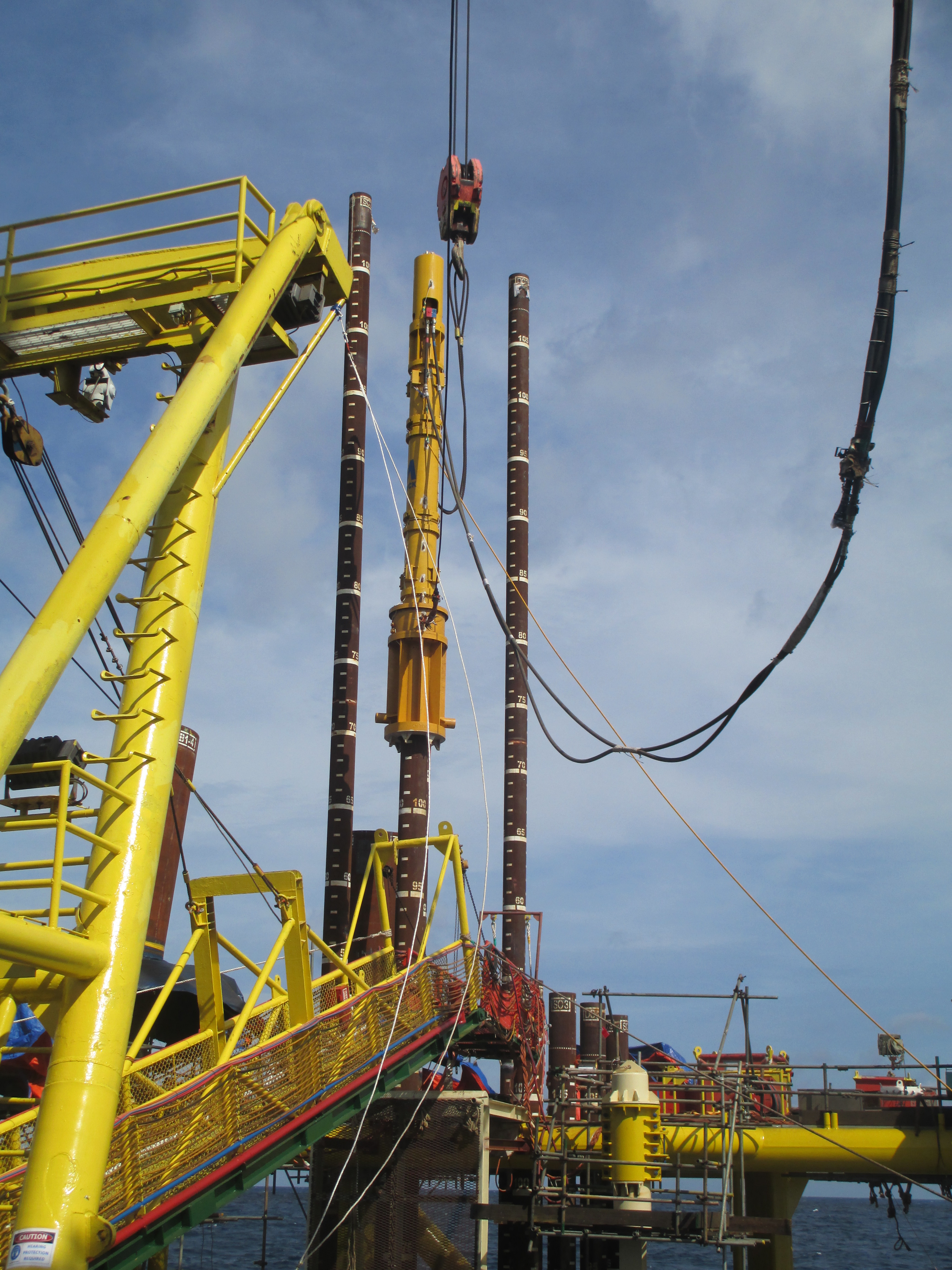

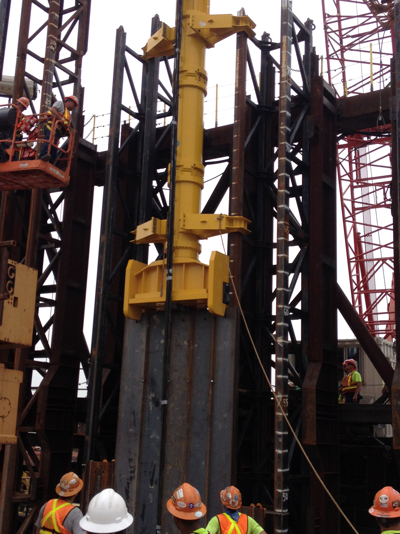
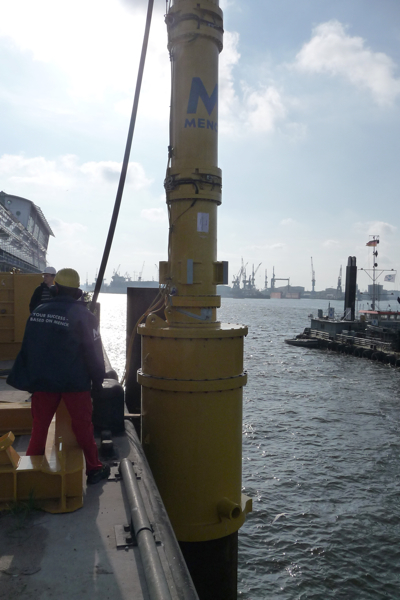
Key features & Benefits
- Slender design with simple and uncomplicated operator controls
- Compatible with standard MENCK power packs and control systems
- Energy levels are seamlessly adjusted from 10% to 100% of nominal energy through the MHC 21 hydraulic control system with hammer performance monitored in real time
- Free riding and submersible up to 300 meters.
- Quick and easy pile sleeve adaptation for various pile sizes, reducing set-up time thanks to the exchangeable insert system
- Suitable for subsea portable templates such as the StabFrame™
- Dry glider ram weight system makes the hammer more environmentally friendly and ensures a safe and clean operation
- Rubber-based shock absorbing system protects the hammer from energy rebounds and helps reduce maintenance time and cost
- Quick connect release for hydraulic hoses to save time during operation
- Suitable for operation on drilling vessels through moon pool
- Various options available to suit the application including vertical hose connection configurations in order to fit into tight spaces
- Higher energy output with a lower total hammer weight thanks to the double-acting hydraulic drive unit which not only pulls the ram weight up but also pushes it back down
- Lower ceiling clearance for transport and a smaller footprint on deck with offset lifting supports and eccentric pins
- Safety shut-off devices. If the shackle leaves its horizontal resting position, indicating tension on the crane line, the hammer automatically stops. Sensors monitor hammer to pile contact. If there is not proper contact to the pile, the hammer will not operate.
- Reduced energy loss with the pressure compensation system. An external compressor fills the area where the hammer meets the pile with air. The system monitors the water level inside the pile sleeve, preventing water blows and associated energy loss.
- Environmentally-friendly. A closed loop hydraulic system minimises the risk of oil emissionand biodegradable oil is used.
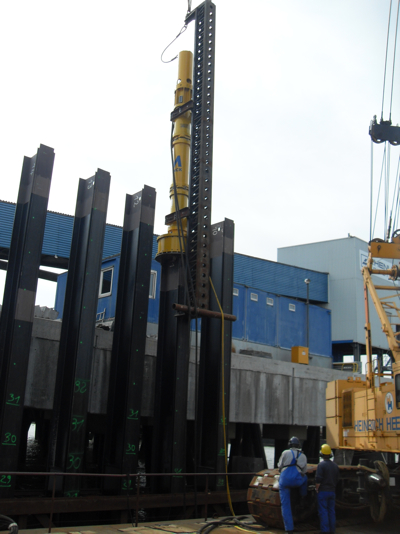
Operational Data*
- Minimum energy: 10 kJ/7,375 ft-lb
- Maximum energy: 100 kJ/73,756 ft-lb
- Oil flow at maximum energy: 240 L/min
- Blow rate at maximum energy: 45–50 bl/min
- Hammer weight above water: ≈ 15.6 t
- Hammer length: ≈ 10.4 m/34 ft
- Water depth: 30 m/98 ft (with modifications for applications up to 300 m/984 ft)
- Hammer diameter: 720 mm/28.3 in
Piling Information
- Steelpipes, H-beams, sheet piles, easy modification for other piles
- Maximum pile size: 1.6 m/60 inch
- Inclination: Up to 1:3 free riding, 1:1 leader guided
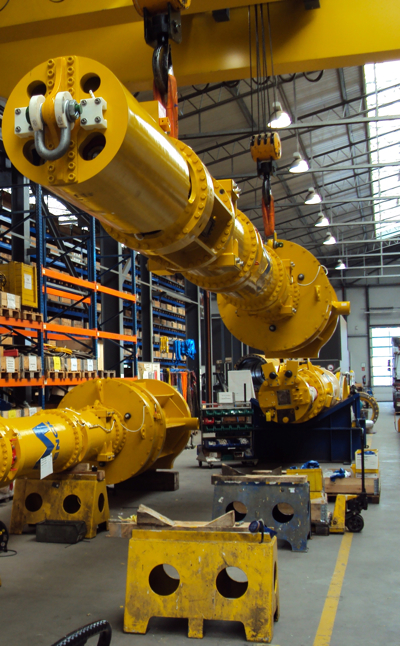
Complementing the MHU 100C hammers are system components and services such as:
- Hydraulic lines and winches
- On deck power packs (MHP)
- Control systems
- Highly-qualified service technician Project management and engineering services After-market care - maintenance, spare parts and fleet management
MENCK provides a complete range of hammers up to 3500kJ for a variety of applications. Learn more about the makeup of the hammers
